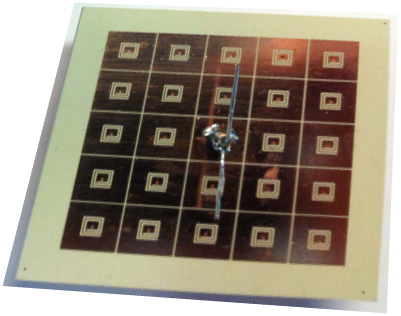| Data and Time |
Sept. 27 , 2011, 5:00-6:00 PM |
| Location |
Galbraith Bilding, Room 303
|
| Host |
Leon Yuan |
Understanding 'Mushroom'-Related Structures and Their Application to Antennas

Shahzad Reza
The Edward S. Rogers Sr. Department of Electrical and Computer Engineering (Electromagnetics)
Abstract:
The mushroom-like Sievenpiper structure is an artificially-engineered
electromagnetic band-gap surface which exhibits two distinct properties that
prove very useful within the context of antenna design. First, it exhibits a
band-gap to waves propagating along the surface over a certain bandwidth.
This can be used to mitigate coupling between antennas or reduce
surface-wave radiation. Second, it acts as a Artificial Magnetic Conductor
(AMC) for incident plane waves for a specific set of frequencies. This
allows it to be used as magnetic ground planes for various antenna types. It
is known that these properties can occur over distinct bandwidths; however,
it is unclear if these properties relate to each other or if there is any
benefit to having the bandwidths of both properties coincide. The
conventional mushroom-like Sievenpiper structure will be re-visited in this
talk and a relationship will be established between the dispersion and
reflection phase characteristics of the structure. The influence of having
the AMC and surface wave band-gap bandwidths coincide will be examined
numerically by means of a dipole antenna. Finally, simulated and
experimental results will be presented.
Biography:
Shahzad Raza is an M.A.Sc. student in the Electromagnetics Group under the
supervision of Professor George Eleftheriades. His research involves the
study of Artificial Magnetic Conductors and their applications to antenna
design. |
|
|